After Chateau Fontainebleau we continued our week with more fancy old rooms. We love looking at these insights into the life of the rich and famous from centuries ago – don’t know why, but we do.
Last Stay in Paris (sob, sniff, boo-hoo)
We will return to Paris for a day trip or two just before we leave, but this week was our last stay at Mary & Gilles’ apartment there. We almost chickened out, as we went to the train station in a torrential downpour, but we persevered and though it wasn’t warm and sunny, at least we didn’t get rained on too much.
Our first stop was at the Louvre, Wednesday evening. The Louvre stays open until 9:45 on Wednesday and Friday evenings, and that’s about the only time we’ll go; the place is just too crowded during the day (not that it was exactly empty at night!).
Recently the Louvre opened a new exhibit of decorative arts from the times of Louis XIV, Louis XV and Louis XVI, which covers the years from about 1670 to 1790. Decorative Arts encompass just about anything that had to do with decorating the places that people lived during those times. Of course, only the very rich could afford to decorate anything, so we end up with an insight into how the kings and queens and aristocracy lived. I think we can safely say they lived very nicely.
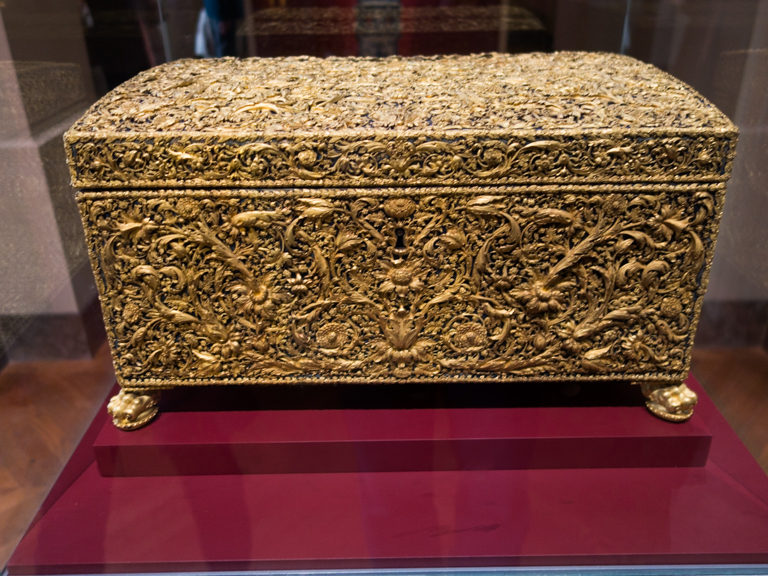
Looking for a gift for the person who has everything? How about a nice gold chest to store all those things?
There are about thirty such rooms, all with furniture and art from the correct times. But you know what we liked best: the snuff boxes.
I can hear you saying, “Oh, boy, they’ve eaten too much cheese. Snuff boxes?” In the late 1600s and 1700s there was a huge rage to collect snuff boxes, and the exhibit had a bunch of them. They are just beautiful! Here are a few… Keep in mind that the largest of these is maybe two inches wide, and then look at the decoration on that tiny surface.
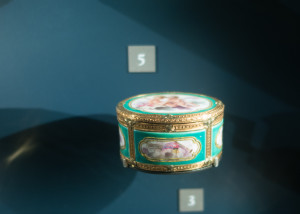
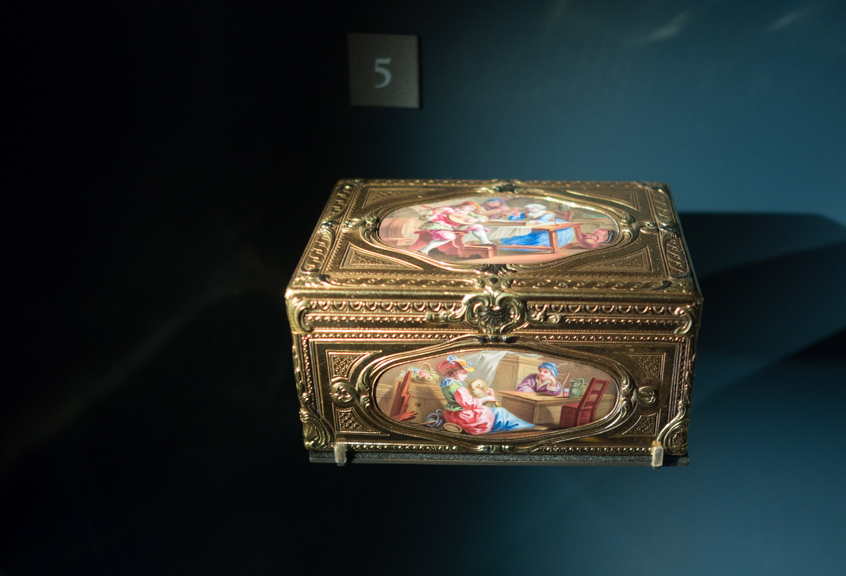
The pictures on the top and front of this box are about an inch high and an inch and three-quarters wide. How did the artist get such detail into it?
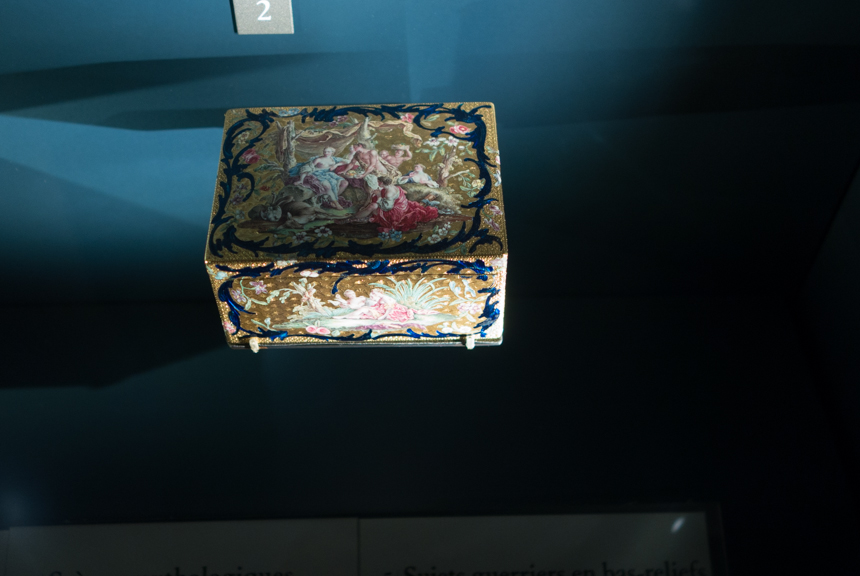
Snuff boxes – who’d’ve thunk? I’d like to collect a few myself, but I can only imagine what one of these would cost, and I can guarantee that it would drastically deplete my already depleted retirement fund. (Update: I Googled “snuff boxes auction” and turned up a few nice snuff boxes with porcelain paintings, but nothing like these. Minimum bid is 5,000€ (about $5,500). Laurie says I can’t place a bid.
The picture I post every year:
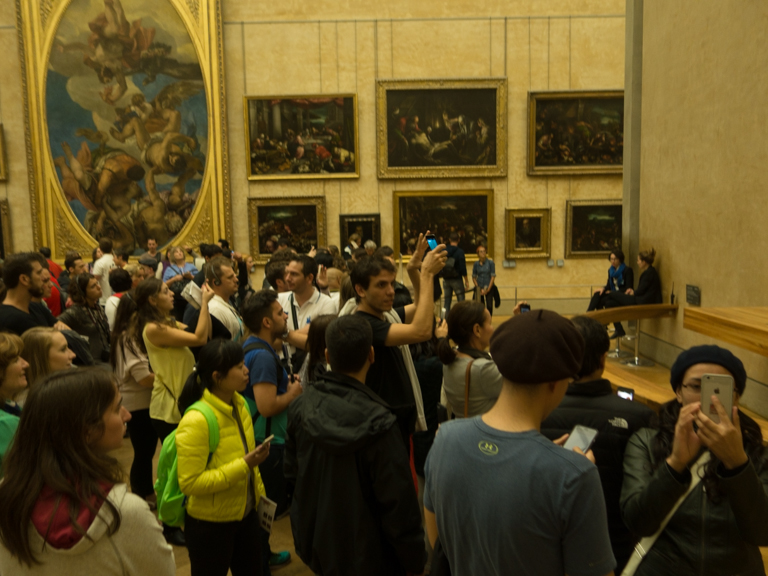
Nobody goes to see the Mona Lisa; they go to take a picture of the Mona Lisa, or a selfie of them with the Mona Lisa behind them because they are way more important than the Mona Lisa.
(Start of rant)
I have to say I don’t get the selfie craze. It seems to me that lots of people are going to look at their pictures when they get back home and say, “There’s me in front of the Eiffel Tower; there’s me in front of the Mona Lisa; there’s me in front something – don’t know what; there’s me at a café; there’s me at dinner the first night; there’s me at breakfast the next day; there’s me on some bridge across the Seine, there’s me in front of something else – don’t know what…” ad infinitum, ad nauseum.
I know this is nothing new, but we saw thousands of people taking pictures of themselves in front of something actually interesting. Ugh. I know I’m old fashioned about this stuff (notice how many pictures on this blog have Laurie and/or me in them), but sheesh, that a person has a picture of something means they were there; is it necessary to prove it by including themselves?
(End of rant)
Maybe worse, though: I saw a woman in the Decorative Arts exhibit who walked into each room, stopped long enough to take a picture and then moved to the next room, where she repeated the process. She is going to get home and have hundreds of pictures of things she could have actually seen at the Louvre.
Musée Nissam de Camondo
Continuing our Old Rooms Week, we went to the Musée Nissim de Camondo the next day. This home was built in the early 1900s by Comte Moïse Camondo to house and display his best-in-the-world collection of late 1700s furnishings. He inherited a house in the rather fashionable Monceau district of Paris, tore it down completely, and then designed and built a huge, beautiful home very much as if it had been built at the end of the 18th century. He loved that time, and dedicated his life to building this remarkable collection. Here are two rooms (full disclosure: I swiped the first two pictures from the museum’s website; photographs were not allowed, though I snuck a couple in the kitchen).
We’re getting ready to do a kitchen remodel when we return, and we got some good ideas:
Sadly, things turned out poorly for Comte de Camondo. He was forty when he married a twenty-year old woman, who gave him a son, Nissim, and a daughter, Beatrice, and then ran off with her horse trainer. When his son was killed in World War I, Moïse pretty much retired from life. He died in 1935, giving the house and his collection to France, which has maintained it since. Maybe it’s good that he died before the war, because his daughter, son-in-law and two grandchildren disappeared into Auschwitz and died there.
We’ve wanted to visit the Musée Nissim de Camodo for quite a while and I’m glad we finally got it together to do so. If you have a couple hours in Paris that you’d like to do something low-key, I recommend this place. It’s an amazing look into a beautiful past.
One Last Church
There are a million churches in Paris it seems, and many are beautiful and all, we think, worth a look-see. The last thing we did was to peek into Eglise Saint Etienne du Mont, which is in the Latin Quarter. Now this church has some unusual features: the ancient tombstone of St. Genevieve, patronne saint of Paris; a bent nave (really, see the picture below), but what is most interesting is that it has the last and only jubé (“rood screen” in English) in Paris.
The jubé separates the parish congregation from the priests during a Mass. Why they needed to be separated I don’t know, nor did the revolutionaries who tore them down during the French Revolution. Somehow the one at St. Etienne du Mont survived, and it is beautiful.
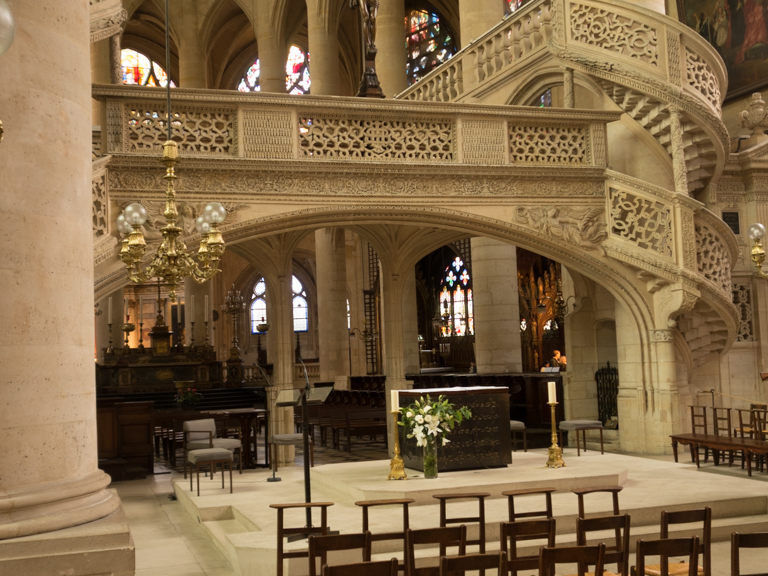
The jubé – Rood screen, in English – at St. Etienne du Mont. For an unknown reason – unknown to us, anyway – it has a distinctly Islamic look to it. We’ve seen decorations like this in Moorish Spain.
For you, Margaret: said to be the most beautiful organ in Paris, and who are we to argue with that?
The curved nave:
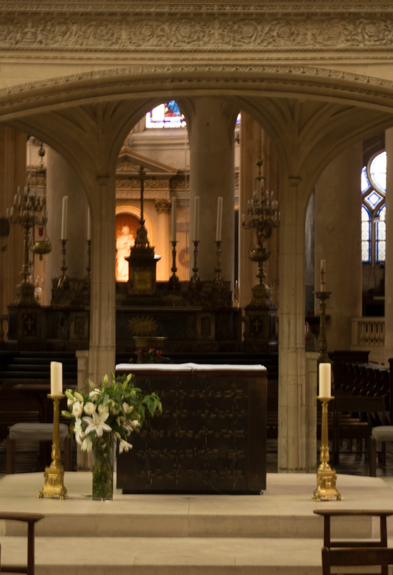
This picture is aimed straight down the nave, past the altar. Note that the altar (with candles and a large pointy something), and the statue beyond it are actually in the center of where they stand. The church bends a few feet to the left past the jubé. Don’t know why.
I’ve got a few favorite churches in Paris, and St. Etienne du Mont joins it.

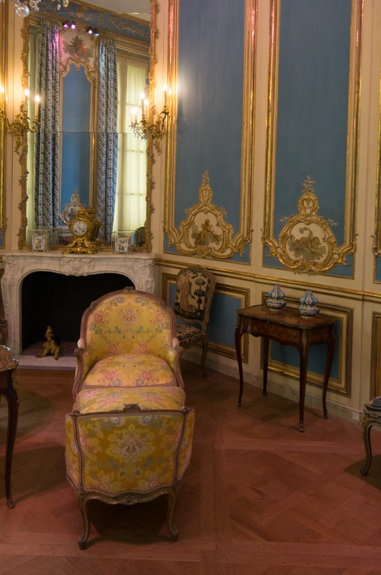
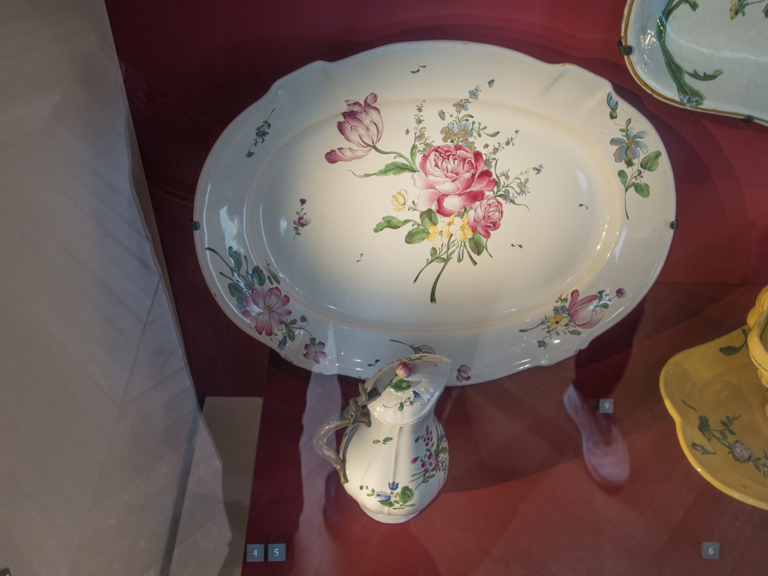
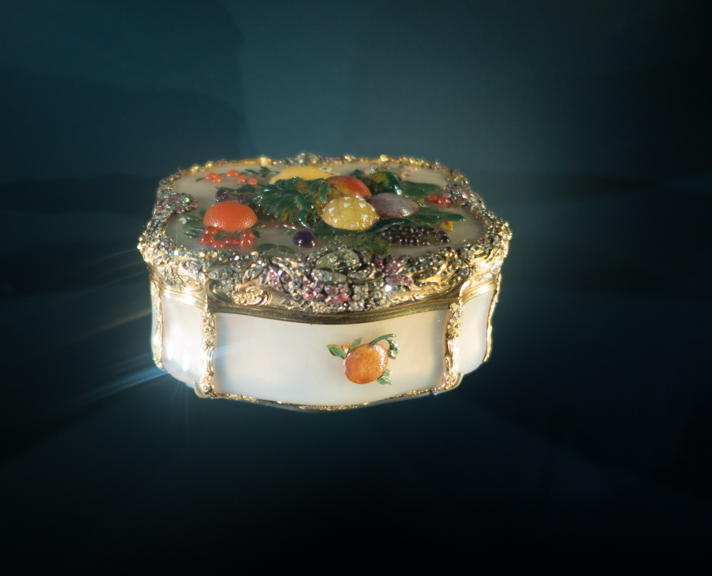
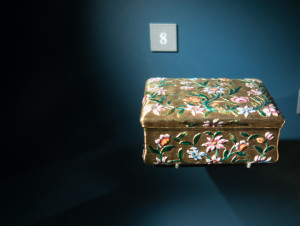
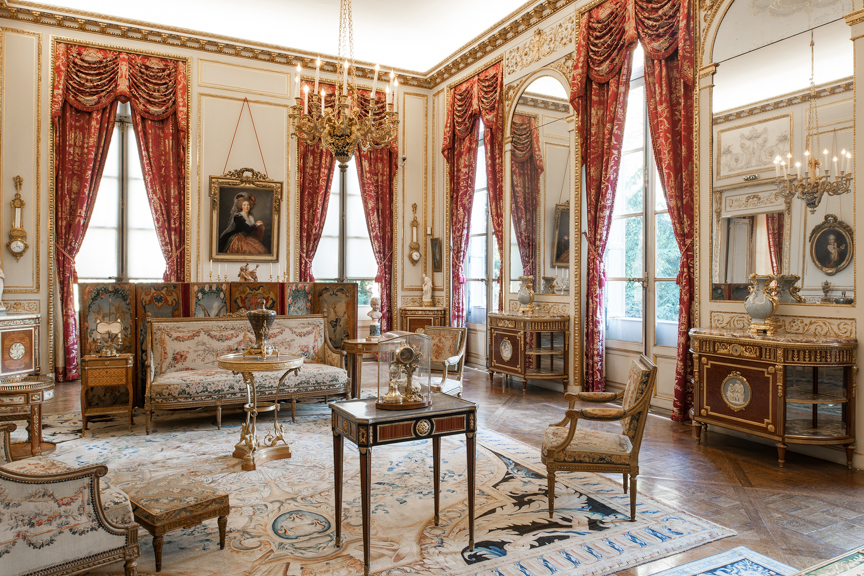
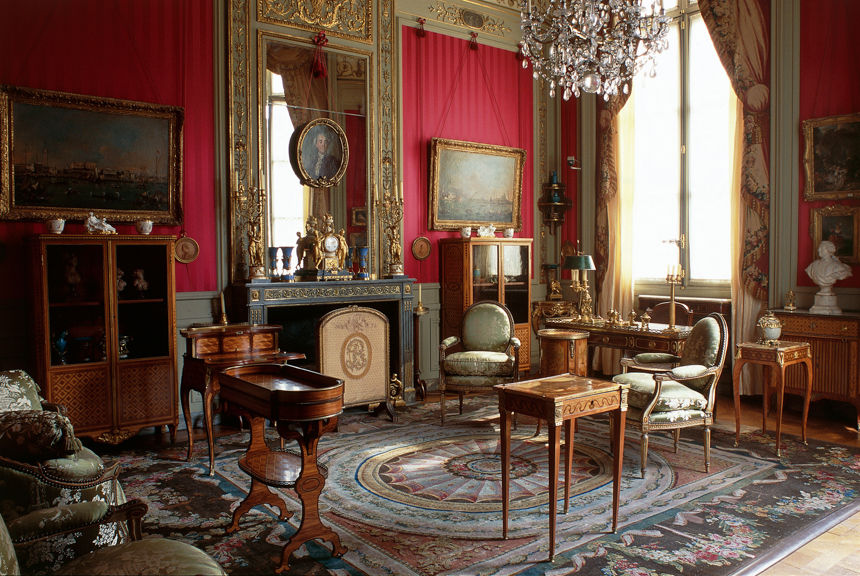
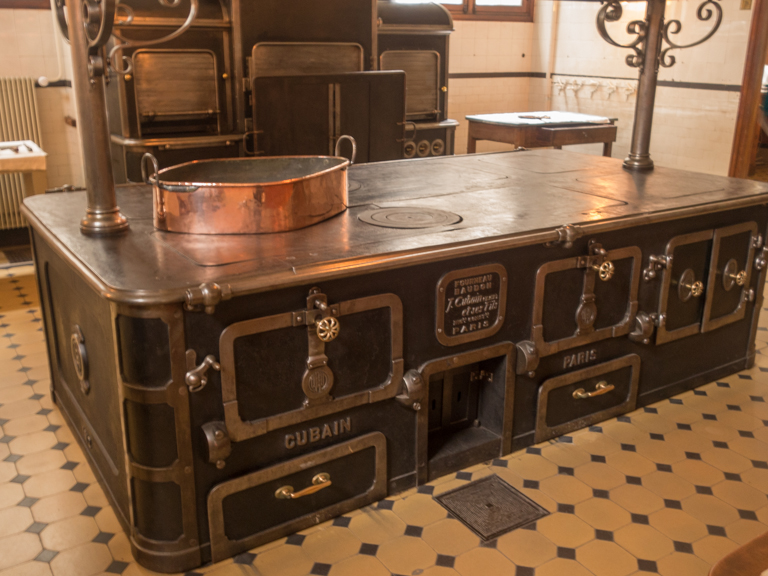
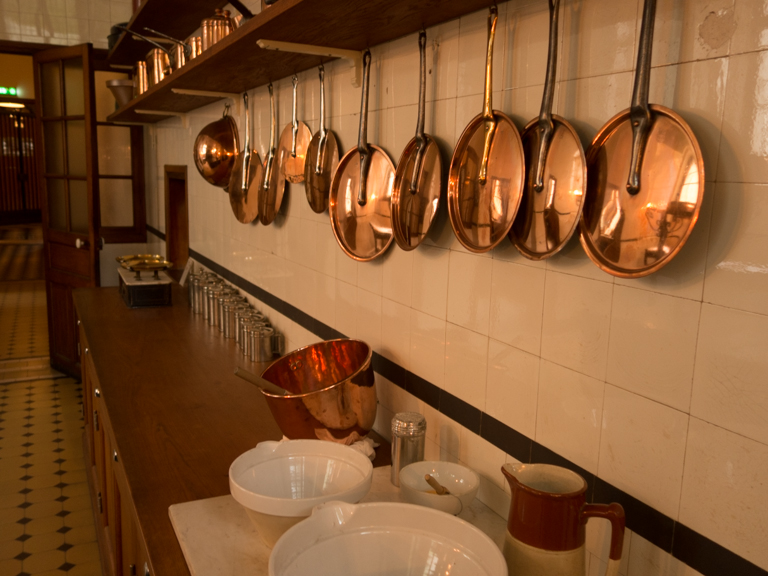
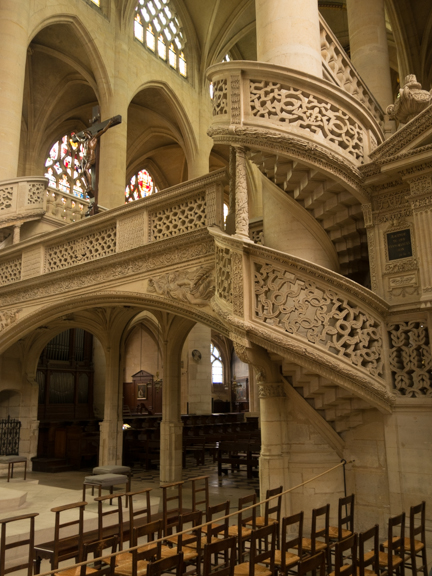
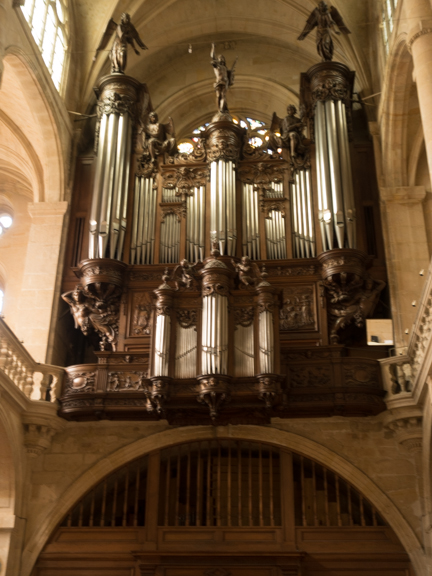
I never get my fill of amazing pipe organs facades!! This is a beauty for sure!!
I’m sure Laurie got some nice decorating ideas from these visits!